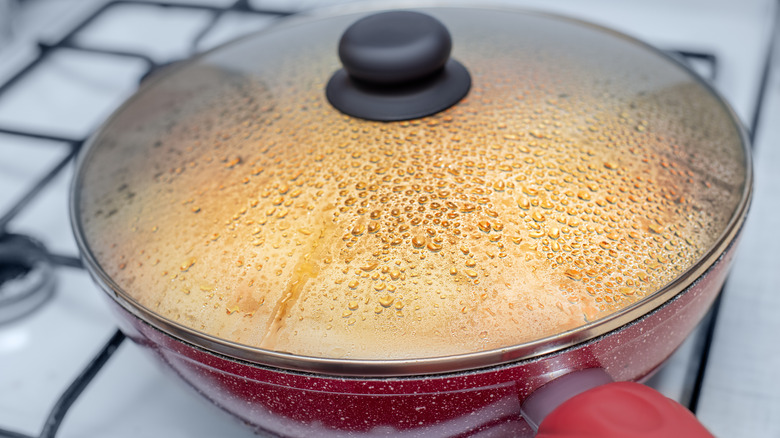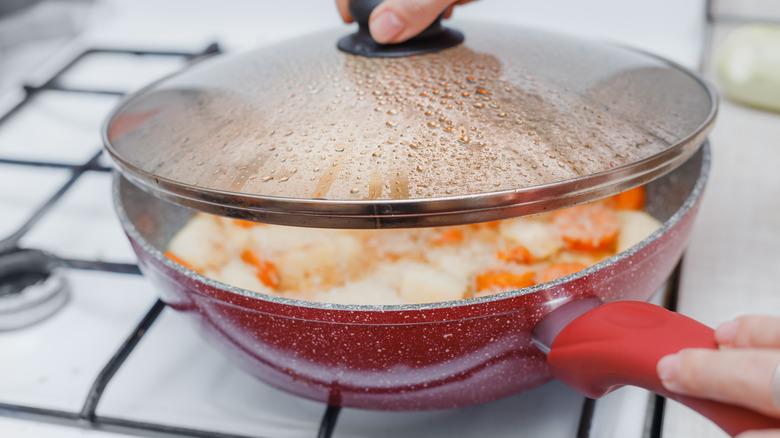What Simmering With A Lid Really Does
Ah, the elusive question of when, why, and how to use a pot lid while cooking. Even the most seasoned home chefs wonder what exactly changes with a lid. We've all been there — after a long day, you return home starving and impatient as you cook what was supposed to be a quick meal, but each minute feels like an eternity.
In an effort to shorten the amount of time between the stove lighting with a click and the delicious flavors hitting your tongue, you throw a lid over the savory food taunting you from the pan and cross your fingers it was the right move. Maybe you're following a new recipe by the letter, but it didn't specifically say whether or not to cover the pan. Or you already have the lid on your pot of rice but can't resist the urge to lift it up to stir or check on it. As the steam tantalizes your nose, you remember that lifting the lid is a big mistake while cooking rice. But why?
What does simmering with a lid actually do? When should you be covering your pot or pan while cooking, and when should you leave it uncovered? Read on to finally understand exactly what's bubbling in your pot and how to optimize your lid use.
What's cooking under the pot lid?
The cooking process will create two elements that are essential. A gas-powered flame or electric stovetop element transmits heat to the pot or pan in order to cook the food. As a byproduct of the heat, any liquid will evaporate in moist steam. According to MarthaStewart.com, the purpose of simmering with a lid is to trap the heat and moisture, so the decision to use a lid is based on how these elements will affect the food.
If it's important to keep heat and moisture in, as when you're boiling water or cooking rice or pasta, you should definitely put a lid over your pot and refrain from lifting it. For example, if you are steaming veggies in a wok, use a lid to make sure the heat and moisture will stay to tenderize the food. Alternatively, when the cooking process depends on excess heat and moisture escaping, such as when you're cooking a broth until it reaches the correct thickness or boiling a liquid mixture into a reduction, you should not use a lid.
So the next time you're second-guessing your pot lid when cooking, remember the heat and moisture. If you want them to stay with the food, throw the lid on. If you want them to escape, leave it off.

